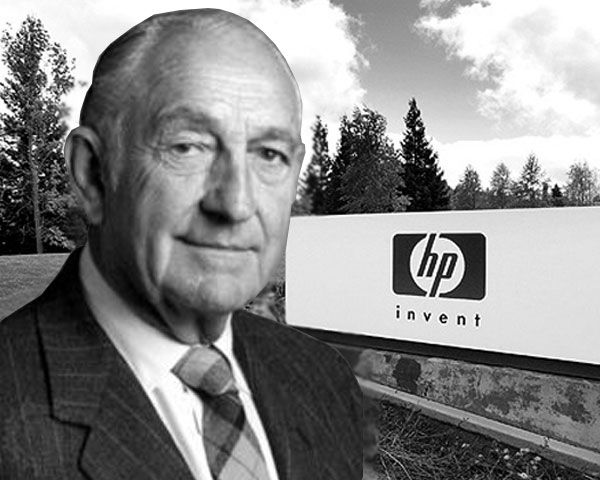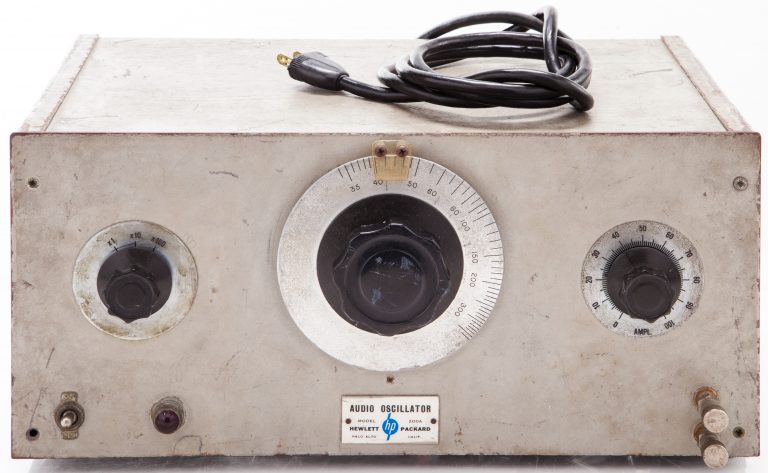David Packard, a name synonymous with innovation and leadership in the technology industry, is best known as the co-founder of Hewlett-Packard (HP). His journey from a humble beginning to building one of the world’s leading technology companies is a story of perseverance, vision, and a relentless pursuit of excellence.

Early Life and Education
Born on September 7, 1912, in Pueblo, Colorado, David Packard grew up during a time when technology was in its infancy. His early life was shaped by his love for electronics and engineering, which was evident even as a child.
This passion led him to Stanford University, where he earned a degree in Electrical Engineering in 1934. It was at Stanford that he met Bill Hewlett, a fellow engineering student who would become his lifelong business partner.
The Birth of Hewlett-Packard
After graduation, Packard worked briefly at General Electric before deciding to return to Stanford for further study.
During this period, he reconnected with Hewlett, and together they began discussing the possibility of starting their own company. In 1939, with a mere $538 in capital, they set up a small workshop in Packard’s garage in Palo Alto, California.
This modest beginning laid the foundation for what would become Hewlett-Packard, a company that would revolutionize the electronics industry.
The first product they developed was an audio oscillator, which they sold to Walt Disney Studios for use in the production of the movie “Fantasia.”
This sale was a pivotal moment for the fledgling company, establishing HP’s reputation for quality and innovation in electronic testing and measurement devices.

Building a Brand
Packard and Hewlett believed in creating a company that was not only successful financially but also respected for its ethical standards. They emphasized a management philosophy that came to be known as “The HP Way.”
This approach was based on principles of respect for the individual, a focus on innovation, and a commitment to integrity. Packard was known for his open-door policy, where employees were encouraged to share ideas and feedback directly with the leadership.
Under Packard’s leadership, HP expanded rapidly, introducing products that set new standards in the industry. The company’s commitment to research and development led to breakthroughs in various fields, including computing, medical technology, and instrumentation. HP’s first computer, the HP 2116A, was introduced in 1966, marking the company’s entry into the computing industry.
Challenges and Triumphs
The journey to success was not without its challenges. During the early years, HP faced stiff competition and financial constraints. However, Packard’s strategic vision and strong leadership helped navigate these obstacles.
He believed in reinvesting profits into research and development, ensuring that HP stayed ahead of the competition. His approach paid off, and by the 1970s, HP had become a leader in the global technology market.
Packard’s tenure as CEO saw HP grow from a small startup to a Fortune 500 company. His management style was characterized by a deep sense of responsibility towards employees, customers, and the community. He was also a strong advocate for corporate social responsibility, long before it became a mainstream concept.
Beyond HP: Public Service and Philanthropy
In 1969, Packard took a leave of absence from HP to serve as Deputy Secretary of Defense under President Richard Nixon.
During his time in public service, he applied his business acumen to the management of the Department of Defense, focusing on efficiency and cost-effectiveness.
After his tenure in government, Packard returned to HP, where he continued to shape the company’s future.
Packard was also a committed philanthropist. In 1964, he and his wife Lucile established the David and Lucile Packard Foundation, which has since donated billions of dollars to various causes, including education, conservation, and healthcare.
His philanthropic efforts reflected his belief in giving back to society and making a positive impact on the world.
Legacy and Impact
David Packard’s legacy extends far beyond the success of Hewlett-Packard.
He is remembered as a pioneer who helped shape the technology industry and as a leader who prioritized ethics and integrity in business.
His approach to management, encapsulated in “The HP Way,” continues to influence corporate culture around the world.
Packard’s story is a testament to the power of innovation, collaboration, and ethical leadership.
From a small garage in Palo Alto to a global technology giant, his journey is an inspiration to entrepreneurs and business leaders everywhere.
His impact on the industry and his contributions to society have left an indelible mark, ensuring that his legacy will endure for generations to come.
David Packard passed away on March 26, 1996, but his influence remains strong, both in the ongoing success of HP and in the countless lives touched by his philanthropic endeavors.

Final Words
David Packard’s life is a remarkable example of how vision, perseverance, and a commitment to values can lead to extraordinary success.
As a co-founder of Hewlett-Packard, he not only built a brand that became a household name but also set a standard for how businesses should operate with integrity and purpose.
His story serves as a powerful reminder that true leadership is about more than just profits; it’s about making a lasting, positive impact on the world.
For more in-depth stories on influential leaders like David Packard, explore our magazine section at Digital Digest. Stay updated with the latest insights and historical retrospectives that continue to shape the world of business and technology.






